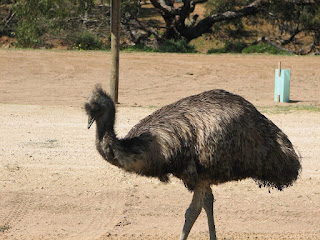 |
| Barbary Dove in our garden, Murray Bridge, South Australia |
Barbary Doves are essentially cage birds both here in Australia and in other countries. As far as I can determine, the original species from which this was bred no longer exists in the wild state in Africa.
The bird shown on this post wandered into our garden a year or so ago. It was obviously a very tame bird and had escaped from someone's aviary. The same thing has happened in some suburbs in Adelaide and in other cities and small breeding populations are emerging.
For more information about Australian birds go to Trevor's Birding.
You can now buy my photos of Australian birds on coffee mugs, tee-shirts and wide range of other item. Click here.
















































